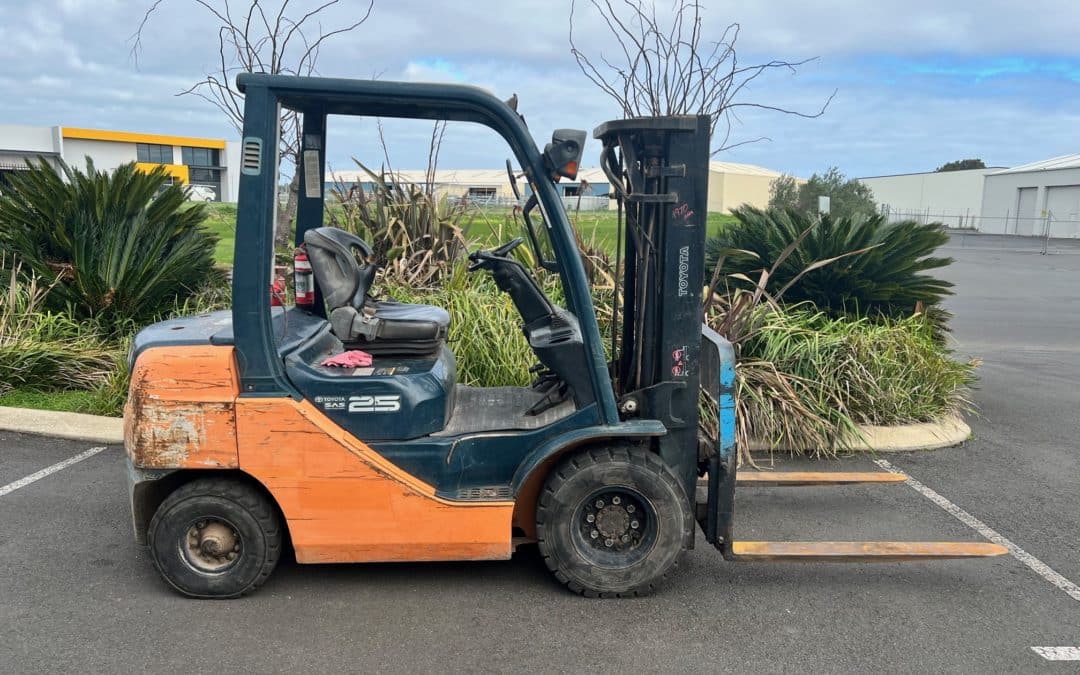When it comes to optimising material handling in your business, finding the best forklift for sale is a critical decision. Forklifts are indispensable in various industries, from warehouses and manufacturing plants to construction sites and distribution centers. However, the process of selecting the right forklift involves careful consideration of factors such as capacity, type, and specific operational needs. In this guide, we’ll explore key steps to help you navigate the market and find the best forklift for sale that aligns with your business requirements.
1. Assess Your Material Handling Needs:
Before diving into the market, conduct a thorough assessment of your material handling needs. Consider the types of materials you’ll be lifting, the height to which you’ll need to lift them, and the overall weight capacity required. Understanding these specifics will guide you in selecting a forklift with the appropriate specifications for your operations.
2. Determine the Type of Forklift:
Forklifts come in various types, each designed for specific applications. Common types include:
- Counterbalance Forklifts: Suitable for general-purpose lifting in warehouses.
- Reach Trucks: Ideal for narrow aisles and high stacking.
- Pallet Jacks: Efficient for moving palletised loads short distances.
- Rough Terrain Forklifts: Designed for outdoor use on uneven surfaces.
Choosing the right type ensures that your forklift is tailored to the demands of your industry and operational environment.
3. Consider Fuel Options:
Forklifts are powered by different fuel sources, each with its own advantages. Options include electric, propane, diesel, and gasoline. Electric forklifts are eco-friendly and suitable for indoor use, while propane and diesel forklifts are better suited for outdoor applications. Consider your operational needs, environmental concerns, and budget when selecting the fuel type that best aligns with your business requirements.
4. Evaluate Lifting Height and Capacity:
The lifting height and capacity of a forklift are critical factors to consider. Assess the maximum height your forklift needs to reach for stacking or storage purposes. Additionally, ensure that the forklift’s lifting capacity aligns with the weight of the materials you’ll be handling. Choosing a forklift with the right combination of height and capacity is essential for efficient and safe material handling.
5. Explore Attachments and Customisation:
Forklifts can be equipped with various attachments to enhance their versatility. Common attachments include side-shifters, fork positioners, and clamps. Consider the availability of attachments that can be added to the forklift to accommodate specific materials or tasks. Customisation options ensure that the forklift is tailored to meet the unique demands of your operations.
6. Research Reliable Brands and Dealers:
Research reputable forklift brands known for manufacturing reliable and durable equipment. Explore customer reviews, testimonials, and industry reports to gain insights into the performance and longevity of different brands. Additionally, choose a reputable forklift dealer with a track record of providing quality equipment, excellent customer service, and reliable post-purchase support.
7. Evaluate Maintenance and Service Options:
Regular maintenance is crucial for the longevity and optimal performance of a forklift. Inquire about the availability of maintenance packages and service agreements offered by the dealer. A comprehensive service plan ensures that your forklift receives regular inspections, repairs, and preventive maintenance, minimising downtime and extending the lifespan of the equipment.
8. Test Drive and Operator Training:
Before finalising your decision, arrange for a test drive of the forklift model you are considering. Evaluate the ease of operation, visibility from the operator’s seat, and overall comfort. Additionally, inquire about operator training programs provided by the dealer to ensure that your staff is well-equipped to handle the forklift safely and efficiently.
9. Compare Pricing and Financing Options:
Compare pricing from different dealers and assess the overall value provided by each. In addition to the upfront cost, consider long-term costs associated with maintenance, fuel, and potential repairs. Explore financing options, lease agreements, or rental programs that align with your budget and cash flow requirements.
10. Consider Resale Value:
While focusing on the initial purchase is crucial, also consider the resale value of the forklift. A forklift with a higher resale value can be advantageous when upgrading your equipment or making adjustments to your fleet in the future. Opting for a forklift that holds its value well ensures a better return on investment in the long run.
In conclusion, finding the best forklift for sale involves a comprehensive evaluation of your material handling needs, consideration of specific forklift types, fuel options, lifting capacities, and exploration of attachments and customisation possibilities. Researching reliable brands and dealers, evaluating maintenance and service options, and conducting a test drive are crucial steps in the decision-making process. By carefully navigating these considerations, you can ensure that the forklift you choose is not only suited to your current operational needs but is also an investment in the long-term efficiency and success of your business.





